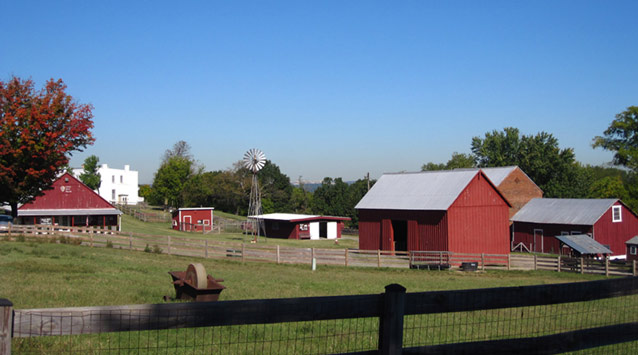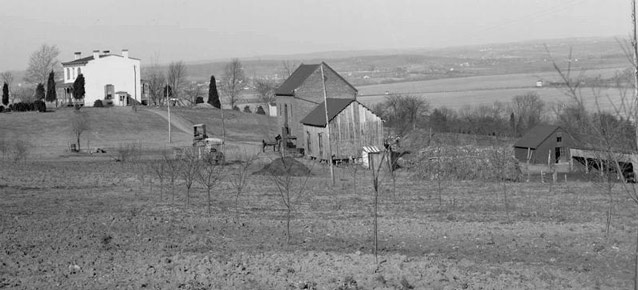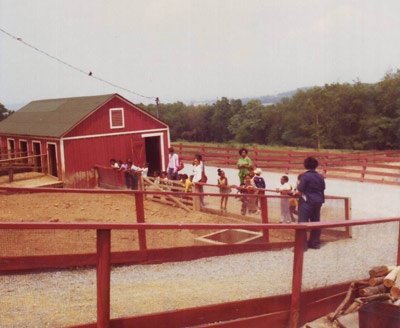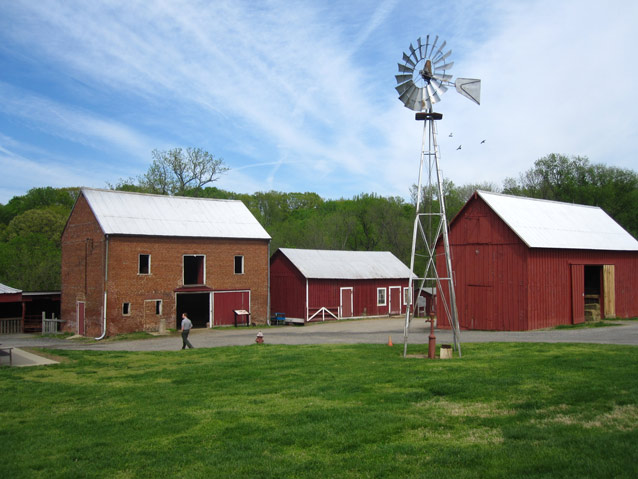
NPS Photo, 2010
Oxon Hill, Maryland
Commuters crossing the busy Woodrow Wilson Bridge outside Washington, DC may not notice the national park perched on a hill overlooking the Potomac River. Hidden from the nearby highways and subdivisions by a screen of trees, Oxon Hill Farm is one of the few remaining agricultural landscapes in Prince George’s County, Maryland. If drivers are aware of the park on the hill, they may know it as the farm that has delighted area school children for decades. What they may not realize is the place where excited kids encounter farm animals, learn how syrup is made and sheep are sheared, was both a witness to war and a healing landscape.
Nearly eighty years later, during more peaceful times and long after the DeButts had departed the property, the farm was purchased for healing purposes. Acquired by the federal government in 1891, Mount Welby became known as Godding Croft and was intended to be a colony for a large number of patients from the nearby Government Hospital for the Insane. Founded in 1852, the hospital was the nation’s first federally operated mental health facility and was established to care for members of the military and the poor residents of the District of Columbia. Today it is known as St. Elizabeths Hospital. The house that served as the DeButts family home now sheltered the farm manager and patients who worked on the farm.

Courtesy of the National Archives
At the time the property was purchased, labor was part of patient therapy at many mental hospitals. The head of the Government Hospital hoped Godding Croft would be one of many “villages for the harmless insane, homes planted about with gardens and orchards…bringing to darkened minds and troubled lives glimpses of sunshine and peace.”* Godding Croft was planted with gardens and orchards, and eventually became the hospital’s primary farm. Along with producing sweet potatoes, carrots, turnips and beets, Godding Croft included a piggery, dairy, and poultry operation.

NPS Photo
The colony envisioned at Godding Croft was never realized. Through the early twentieth century, patients labored on the farm, but never in the numbers imagined when the property was purchased. By the time the farm closed in the 1966, the hospital had found cheaper and less labor intensive methods for acquiring food.
The National Park Service opened Oxon Hill Farm in 1967and has been teaching children about historic agricultural practices since the first visitors arrived more than forty years ago. Today, rangers also tell the story of the DeButts and the patients at St. Elizabeths. Visitors can stand on the farmhouse porch and imagine war ships on the Potomac, or wander the through the fields and think about the people who labored there in the hopes of better health.
*Report of the Board of Visitors of the Government Hospital for the Insane, 1892.
Visiting this Landscape

NPS Photo
You can find park events, announcements, and more information to plan your visit at the Oxon Cove Park & Oxon Hill Farm website. This park is part of National Capital Parks - East, with many nearby parks to explore.
Last updated: October 15, 2021
